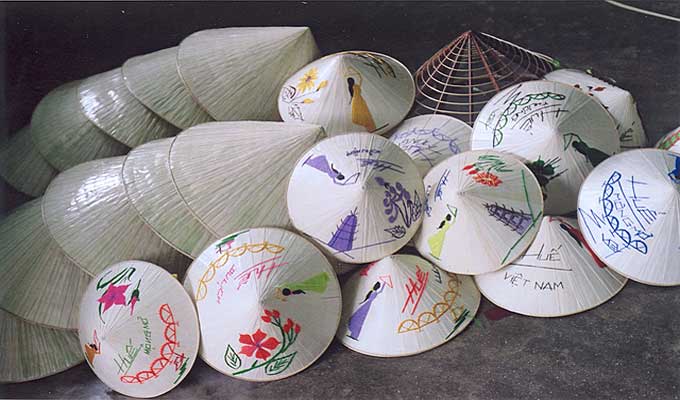Authorities of central Hue city have added six more villages to the list of recognised traditional crafts in an attempt to preserve and develop these crafts.

These are the villages of Phong Son (conical hat making), Hien Luong (blacksmith), Van Trinh (net making), and A Dua and A Hot zeng (fabric weaving), in addition to Sinh paper (making paintings). These originated centuries ago since the formation of the villages and today the villagers maintain the crafts for their livelihood.
Local women today continue their use of conical hats, which are made of dry palm leaf, for protection from sunlight and rain, and so far the craft maintains their strong links to Hue. Tailor scissors made by blacksmith artisans in Hien Luong remain the first choice for the career by old, skilful tailors around the country, including Hanoi and HCM City.
In Sinh village, the craft of making paper paintings ran into rough weather in 1980s when the campaigns to eliminate superstition conducted around the country before local artisans revived it recently with wooden blocks that they buried a long time ago.
The villagers are busy today with the increasing needs of votive paper paintings used for burning and hanging in local rituals. Those are made by inking the wooden blocks on a white paper sheet for a black and white copy then the artisans use paintbrush to colour it.
Ky Huu Phuoc, a prominent artisan in the village, has managed to bring the ritual craft closer to life by creating new wooden blocks with the old patterns to ink wall calendar tapes and ornamental paper paintings.
“These help to diversify the craft products and I think the switching from ritual to ornamental purposes will give the craft a new life,” Phuoc said.
Hue is home to a lot of traditional craft villages as artisans from other localities once gathered here to serve the royal needs during the time Hue was the feudal capital under the Nguyen Dynasty (1802-1945)’s rule.
Many of the village remain their production and manage to adapt to modern life. Local authorities have made the list of 16 traditional craft villages and other 10 craft communities to monitor and support their development.